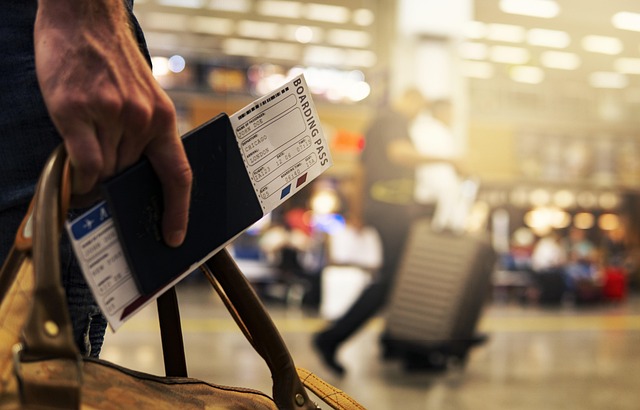Digital Tools for Real-Time Route Adjustments
Real-time route adjustment tools help travelers and operators respond to delays, congested roads, and unexpected events. This article explains how apps and platform features — from mobility and transit systems to airline and logistics tools — work together to update itineraries, fares, and routes dynamically.

Modern travel and transport rely increasingly on digital tools that adjust routes as conditions change. These tools combine live location data, schedule feeds, sensor inputs, and user reports to suggest faster or more reliable alternatives. For individual travelers, that can mean rerouted rideshares, modified itineraries, or alerts about airport delays. For operators and logistics teams, it means dynamic dispatching, capacity reallocation, and coordinated contingency plans that reduce disruption without manual intervention.
How do mobility apps adapt routes?
Mobility apps use GPS, traffic feeds, and historical patterns to reroute drivers and riders when congestion or incidents appear. Algorithms weigh speed, distance, and pickup/dropoff constraints to suggest alternative paths. Some services also factor in sustainability metrics like emissions per route. For commuters, this can translate to automatic detours or rerouted rideshares; for drivers it can mean optimized sequences of stops. Privacy controls and permissioned location sharing are often part of these systems to balance usefulness with user consent.
How do transit systems use real-time data?
Public transit agencies ingest vehicle location (AVL), passenger load sensors, and schedule adherence data to dynamically adjust service and passenger information. Real-time arrival displays and mobile notifications update users when a bus or train is delayed, and some systems automatically alter connecting services to maintain transfers. Agencies may publish GTFS-realtime feeds that third-party apps use to show live vehicle positions and estimated arrival times. This helps riders make informed decisions about transfers, alternative routes, or departure timing.
How can itinerary tools help mid-trip changes?
Itinerary platforms aggregate bookings, confirmations, and live status from partners to present a unified view of travel plans. When an inbound flight is delayed or a connecting train is canceled, these tools can suggest alternate flights, rebook segments, or prioritize options based on traveler preferences. They may also surface layover options, visa requirements, luggage transfer options, or ground-transport alternatives. Successful implementations maintain a clear audit trail of changes and present choices without overwhelming the traveler with technical details.
How can airport-focused tools ease adjustments?
Airports and airline apps offer gate change alerts, terminal maps, and step-by-step guidance when delays or rebookings occur. Real-time baggage tracking and automated rerouting of luggage reduce missed connections, while consolidated information about security wait times and transit links helps travelers decide whether to expedite or delay a connection. For complex itineraries, multi-actor coordination — between ground handlers, carriers, and transfers — is often mediated by platform APIs that share status updates and handoffs in near real time.
How do logistics platforms manage route changes?
Logistics platforms combine telematics, warehouse inventories, and delivery windows to reroute shipments in response to traffic, weather, or capacity changes. Optimization engines reassign loads, consolidate shipments, or delay non-urgent deliveries to maintain service levels and reduce empty miles. Notifications to customers and drivers are generated automatically, and compliance constraints (for example, shipment permits or restricted access hours) are enforced programmatically. These systems emphasize predictability and visibility to minimize the cost of adjustments.
In practical planning, fares and ticketing are a frequent source of uncertainty. Real-time pricing engines update fares in response to demand, available inventory, and dynamic rules from carriers. For travelers and planners, understanding typical cost ranges and how quickly prices can change helps set expectations before making a switch.
| Product/Service | Provider | Cost Estimation |
|---|---|---|
| Rideshare (short urban trip) | Uber | $8–$30 typical for a 5–10 km ride, varies by city and surge pricing |
| Airfare search and alerts | Google Flights | $100–$700 typical one-way economy international; domestic ranges lower |
| Flight aggregator and fare alerts | Skyscanner | $90–$650 typical, depends on route and flexibility |
Prices, rates, or cost estimates mentioned in this article are based on the latest available information but may change over time. Independent research is advised before making financial decisions.
Real-world cost insights: fares vary by region, time of booking, and service level. Rideshare short trips are sensitive to local supply and surge; budget planning should include buffer estimates. Airfares fluctuate based on demand, seasonality, and advance purchase; alerts and flexible dates can uncover lower options. For logistics, rerouting may add fuel, labor, or access-fee costs; operators often model trade-offs between delay penalties and rerouting expense to choose the optimal response.
Dynamic route adjustment tools reduce uncertainty by giving timely alternatives, but they do not eliminate the need to assess trade-offs between cost, time, and convenience. Systems that present clear, comparable options and transparent pricing make mid-journey decisions easier for both individuals and organizations.
Digital route adjustments are now a practical component of mobility and transport ecosystems. By combining live feeds, predictive models, and interoperable APIs, these tools offer actionable choices when plans change. Travelers and planners benefit from visibility into options, while operators can preserve service quality and efficiency through automated, data-driven responses.





